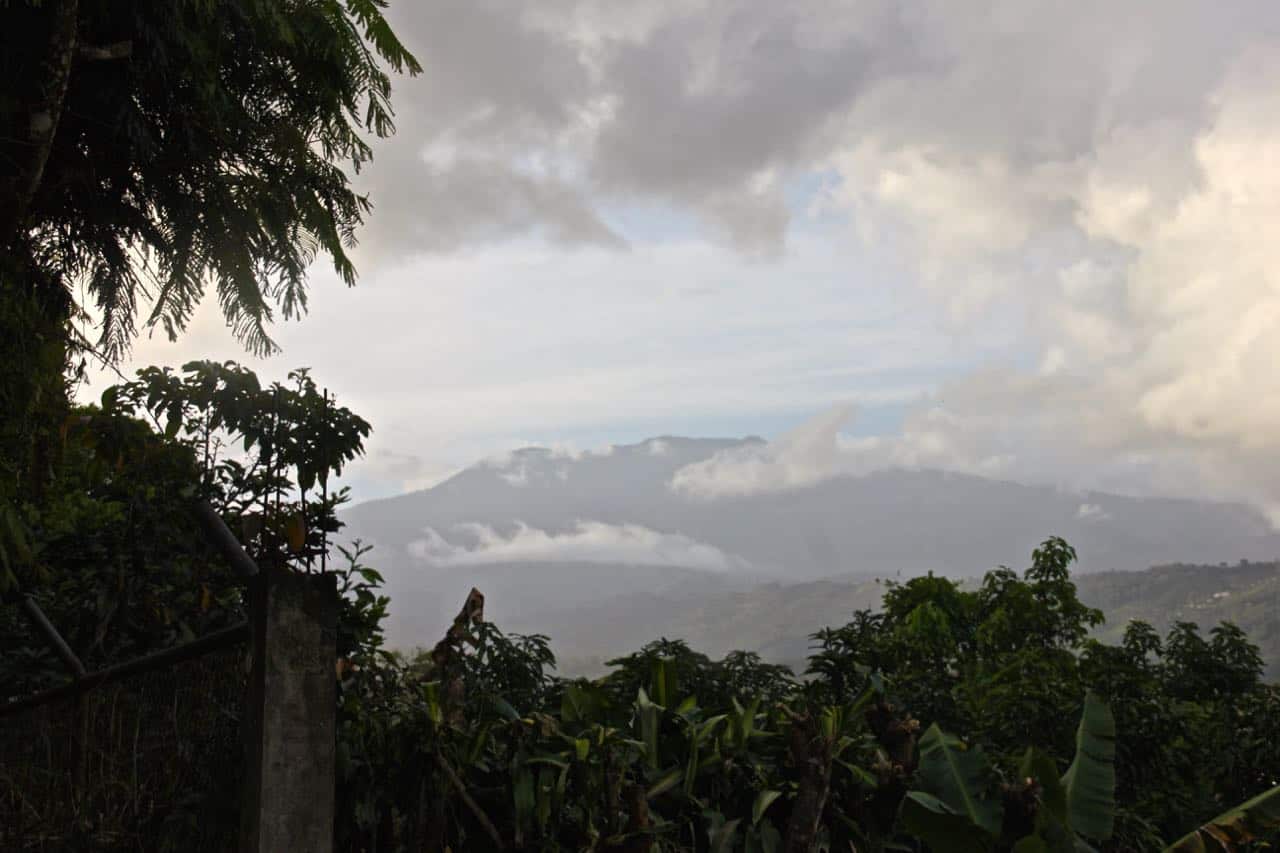TURRIALBA, Cartago — Ask Milagro Rowe Arias if she’s afraid of the Turrialba volcano, and she’ll laugh. “No,” she says, bemused.
This may seem cavalier, considering Rowe lives only 20 kilometers from the highly active metamorphic mountain, in a town that shares the same name. This has been a dramatic year for the volcano in Cartago province, which registered numerous explosions this past week, including a geyser of “incandescent material” on Friday night.
But Rowe is unconcerned. She shares a common sentiment in the town of Turrialba, home to some 35,000 people: the eruptions have almost no effect on valley residents. There have been no toxic gases, no monsoons of ash, not even a funny smell.
The mountain may loom on the horizon, and locals have watched the plumes of smoke rise as high as 1,500 meters above the summit, but the people of Turrialba have only shrugged their shoulders.
“People stopped in the street and took pictures with their phones,” Rowe said with a giggle. “It was very funny.”
Rowe manages the Wagelia Hotel in downtown Turrialba, and if anyone should be concerned about volcanic activity, it’s Rowe.
But in 20 years of working in the industry, Rowe claims that recurring volcanic activity has no negative impact on tourism. If anything, the eruptions are a draw.
“Everybody wants to see the volcano,” Rowe exclaimed. “It’s one of the main reasons they come here.”
Because the town and volcano share the same name, outsiders assume that Turrialba is currently caked in cinders. Locals say they routinely receive worried phone calls from family in other parts of the country.
Turrialbeños seem sympathetic to the plight of Central Valley residents, who have been feeling adverse effects all week, but for them the volcano is harmless.
The reason: wind.
“Ninety percent of the wind flows west,” Massi Devoto, director of local tourism outfit Explornatura, said.
Raised in Puerto Limón, Devoto has spent 15 years in Turrialba and routinely organizes trips into the mountains.
“Of course people think there is an emergency here, because we are so close to the volcano. But almost all of the ash goes to the Central Valley.”
Indeed, darkness and cloud cover often make eruptions invisible to the people below. The volcano makes no audible sound in Turrialba, and while residents have felt small earthquakes during previous eruptions, no one has felt so much as a tremor this past week.
Even the volcano’s explosion of “incandescent material” on Friday night went largely unobserved.
“I didn’t notice anything at all,” Ivannia Paniagua Solís, a hotel housekeeper, said. Paniagua lives in Santa Cruz, the closest town to Turrialba National Park.
“It wasn’t until the morning that someone told me about the eruption.”
But there are secondary effects: around the forested national park, there is a ring of pastures used by local dairy farmers. During eruptions, the ash mixes into the atmosphere and causes acid rain, which contaminates the grass.
During times of emergency, dairy farmers are often required to evacuate down the mountain with their herds. In the valley, these farmers rely on a network of family and friends to host their heifers until they are allowed to return.
“Sometimes the farmers have to come down,” Guido Garrita Ulloa, a custodian and guide at Espino Blanco Lodge, said. “But not so much on this side of the volcano. The situation is worse on the other side.”
It is the other side – the Central Valley – where the volcano has caused serious problems, grounding flights at Juan Santamaría International Airport, delaying a presidential visit to Europe, and causing watery eyes and coughing fits throughout San José.
The fallout has reminded many of the Irazú eruptions from 1963 to 1965, which blanketed the Central Valley in ash.
“The volcano has erupted many times,” Rowe recalled. “It’s bad in the Central Valley, but here there’s no reason for alarm, no reason to be afraid.”








